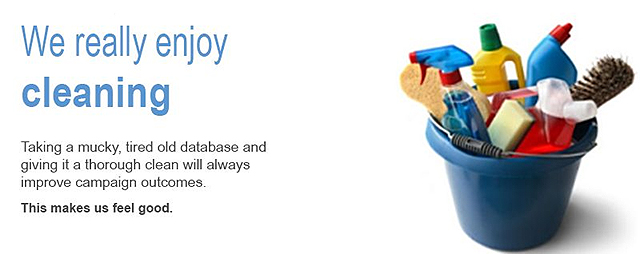RESIDENTIAL & COMMERICAL DATA LEADS
Residential & Commercial Mortgage Lists
| Mailing List Monthly Package - $99/mo |
*Note: Phones and emails are sourced from public information and may not be accurate or current and cannot be guaranteed. If want more accurate phones and emails, consider our Bureau Add-on. |
w/ Mortgage, Property Characteristics & Demographics [Click to Read More]
Premium Data Package - $199 mo*
*Discounted savings of $176 for monthly subscription over standard single purchase price of $375. For Individual Use Only. Sharing or selling data with others is strictly prohibited and against Terms of Service.
- Expanded Premium Data Types (see below for complete list)
- Nationwide Residential & Commercial Data Leads-including property characteristics & mortgage information.
- Unlimited Request up to 3,000 nationwide records per month with *public phone numbers & email addresses if available, included.
- Each record contains property characteristics and mortgage information useful in farming lists.
- $199 per month (plus $3 processing fee). Register, agree to terms of service, First & Last payment with registration, 30 days prior written notice to cancel.
-
FSBO restricted by court privacy laws, but are available thru CDLData.com as $60 package add-on per county
Important Note: Phones and emails are sourced from public information and may not be accurate or current and cannot be guaranteed. If want more accurate phones and emails, consider our Bureau Add-on. Phone numbers are given as is, and have not been scrubbed by the DoNotCall List. If you want your phone numbers scrubbed, it's an additional .175 cents per record.
| Types of Premium Data Available |
Available Types of Distressed Homeowner Leads:
• Mortgage Lates (30 -60-90)
• NODs, NTDS, REOs, Lis Pendens,
• Verified Vacant Properties
• NOO in-state, NOO out-of-state
• Bankruptcy
• Judgments
• Liens
• Probates
• Divorces
• Inheritance
• Evictions
• Civil Cases
• Code Violations
• Tax Deed Sales
• Affidavit of Deaths
•
Forbearance Leads available utilizing our sophisticated A.I.
Our vast and intuitive skip tracing tools quickly locates PHONE numbers and E-MAIL addresses and distinguish between MOBILE and LANDLINES.
-
EFFICIENCY with accurate, real-time information
-
RESULTS that make a difference
-
MULTIPLE sources for accurate data
Phone numbers are given as is, and have not been scrubbed by the DoNotCall List. If you want your phone numbers scrubbed, it's an additional .175 cents per record.
Pricing:
Entry Level: $199/mo
100 Verified Distressed Homeowner Leads
Mid-Level: $399/mo (most popular)
400 Verified Distressed Homeowner Leads
Enterprise Level: $750/mo
1000 Verified Distressed Homeowner Leads
Included: Our automated A.I. will stay in contact with your Distressed Homeowner prospects. All we would need from you is your branding picture and contact information and we can setup 'BOB' to begin helping you market your leads.
Available Types of Distressed Homeowner Leads:
• Mortgage Lates (30 -60-90)
• NODs, NTDS, REOs, Lis Pendens,
• Verified Vacant Properties
• NOO in-state, NOO out-of-state
• Bankruptcy
• Judgments
• Liens
• Probates
• Divorces
• Inheritance
• Evictions
• Civil Cases
• Code Violations
• Tax Deed Sales
• Affidavit of Deaths
•
Forbearance Leads available utilizing our sophisticated A.I.
• FSBO restricted by court privacy laws,
but are available thru CDLData.com as $60 package add-on per county
Additional Add-ons:
Bureau Phone Number Services
Our vast and intuitive Skip Tracing tools quickly locates BUREAU phone numbers and e-mail addresses and distinguishes between MOBILE and LANDLINES.
-
.175 per record. NEW REDUCED PRICING for Customers with PREMIUM Package or higher!
-
Standard rate of .30 record applies to all other orders.
-
EFFICIENCY with accurate, real-time information
-
RESULTS that make a difference
-
MULTIPLE sources for accurate data
Phone numbers are given as is, and have not been scrubbed by the DoNotCall List. If you want your phone numbers scrubbed, it's an additional .175 cents per record.
Data Appending Services
Complete and Correct Customer Details for Superior Customer Identity
-
$133.00 for 10,000 tokens. Click below to view pricing for various types of appends.
-
Fill the missing gaps in U.S. contacts with identity matching!
-
Add missing names, phone numbers, email addresses, postal addresses and more.
-
CDLData.com’s consumer identity matching draws on an individual’s known details to complete missing elements, so organizations can build more thorough customer records.
*Note: All personal contact lists provided MUST include the APN/Parecel ID number. If you don't it, you can get it from your Title Company.
ADD CDLData AI (Bob) for $199/month.
(included with Hidden Treasures)
Take your business to the next level with CDLData AI, your 24/7 intelligent lead conversion assistant. Bob will converse with human like empathy, driving the leads to Agent Ready or Appointment Ready status. Bob will identify itself as an assistant to your brokerage working under the assigned agent. Bob works 24/7/365 and is always available so you don't have to be!
SERVICES
Email Marketing
 |
|
Email Marketing Program As an ISP (Internet Service Provider) we 'GUARANTEE' 100% delivery into the end-users INBOX or your money back. No Spam/Junk folder!
Coming soon... Use CDLData's proprietary A.I. to automatically stay in touch with your Prospects and Clients! Get Started Today |
 |
|
Service is 100% Guaranteed to standard end user mailboxes – your emails will be delivered, or you get your money back. As an agent or investor, you know the value of BRANDING and keeping your name in front of people, so that when they are ready to make a move, YOU are the one they will contact. You don’t have to take our word for it – you can test our system yourself right now! Just enter your contact information into the boxes below, and click “Email me!” Within 60 seconds, you should have a copy of the message in your inbox, smart phone or tablet. Send yourself a Test Message now!
|
Bureau Phones & Emails (Skip Tracing)
Skip Tracing Services
Our vast and intuitive skip tracing tools quickly locates PHONE numbers and E-MAIL addresses and distinguish between MOBILE and LANDLINES.
-
.175 per record. NEW REDUCED PRICING for Customers with PREMIUM Package or higher!
-
Standard rate of .30 record applies to all other orders.
-
EFFICIENCY with accurate, real-time information
-
RESULTS that make a difference
-
MULTIPLE sources for accurate data
Phone numbers are given as is, and have not been scrubbed by the DoNotCall List. If you want your phone numbers scrubbed, it's an additional .175 cents per record.
|
CDLData.com SKIP TRACING - high hit rate & no disconnected numbers Our vast and intuitive skip tracing tools quickly locates PHONE numbers and E-MAIL addresses
EFFICIENCY with accurate, real-time information CDLData.com's Skip Tracing Program can Help You Locate the Highest Quality Data with Phone (including mobile and landlines) numbers with accurate, real-time information. RESULTS that make a difference Live gateways put real-time public records information at your fingertips. Our data comes from four live gateways: all three credit bureaus header (Equifax, Transunion, and Experian) data. You can be confident that you are getting the most accurate and up-to-date information on your subjects. MULTIPLE sources for accurate data Know exactly where the data came from, with a variety of public data outlets and proprietary sources, including phone providers, credit header, and a utility listing database that updates every 24 hours. What is a Batch Skip Trace Search Result? A CDLData.com batch skip trace result includes up to five working phone numbers, a most current address, and up to five email addresses. If a search returns any of that information, it is considered a hit. Sometimes a search result includes only a most current address and no phone numbers, but not very often. What is a Skip Tracing Hit Rate? The hit rate equals the number of skip tracing results, divided by the total For example, if you batch skip traced a list of 100 name and address records, Click on samples below to view what Skip Tracing can add to your data list...
CLICK HERE
to view Sample Skip Tracing BEFORE (Scroll left-right/up-down to see all data) CLICK HERE to view Sample Skip Tracing AFTER (Scroll left-right/up-down to see all data) Let the CDLData.com skip tracing program be part of your data package for updated phone numbers and email addresses. Fast. Accurate. Cost-Effective CDLData.com processing offers high-volume searches at a highly competitive per-hit rate. This automated service is perfect for large quantity searches – saving time and labor costs while reducing errors.
Click Here for More Info or call us at 866-377-4599 (9am-5pm, M-F) PST.
|
Data Append
Data Appending Services
Complete and Correct Customer Details for Superior Customer Identity
-
$133.00 for 10,000 tokens. Click below to view pricing for various types of appends.
-
Fill the missing gaps in U.S. contacts with identity matching!
-
Add missing names, phone numbers, email addresses, postal addresses and more.
-
CDLData.com’s consumer identity matching draws on an individual’s known details to complete missing elements, so organizations can build more thorough customer records.
*Note: All personal contact lists provided MUST include the APN/Parecel ID number. If you don't it, you can get it from your Title Company.
Phone numbers are given as is, and have not been scrubbed by the DoNotCall List. If you want your phone numbers scrubbed, it's an additional .175 cents per record.
| DATA APPENDING SERVICES
|
|
| Effective January 1, 2020
CDLData.com's Data Appending Services Program. Complete and Correct Customer Details for Superior Customer Identity Cost is $103.00 for 10,000 tokens. Click below to view pricing for various types of appends. We offer data enhancement to your existing database to improve your marketing to existing prospects or customers.
|
CDL A.I. (Bob)
|
|
Hi, I'm Bob!ADD CDLData.com AI (Bob) for $199/month. Take your business to the next level with CDLData.com AI, your 24/7 intelligent lead conversion assistant. Bob will converse with human like empathy, driving the leads to Agent Ready or Appointment Ready status. Bob will identify itself as an assistant to your brokerage working under the assigned agent. Bob works 24/7/365 and is always available so you don't have to be! With over 18 months in script-specific development, CDLData.com AI is built on having a deeper, meaningful, more engaging conversations with Distressed Homeowners that leads to conversion. CDLData.com AI not only uses learned behaviors to proactively reach out and have a more productive conversation, but remembers important details of that conversation for future reference to build lasting relationships. |
CDLData.com AI Bot Forbearance Bot Presentation<- Click on left Video to see more. A prime example is how we use 'Bob' - our CDLData.com AI bot - to systematically reach out to troubled homeowners via text message and email, asking a variety of questions looking for three key answers:
By establishing rapport through intelligent dialog and collecting their information, we are then able to pass on that information to YOU, a trusted agent or investor who can help them with their financial troubles.
You want Forbearance leads? We know how to get them. Contact us today to Get Started at: CDLData.com |
|
CDLData.com AI Bot Sample House Flipping<- Click on left Video to see more. In this incredible example we use BOB to actually pre-qualify a prospective home seller and even negotiate a sales price! All done for you automatically! The process begins by us sending out feelers via text message and email to known potential prospects whom we have determined are in a distressed home situation. The prospect is invited to engage with ‘Bob’, our friendly AI virtual assistant – who can initiate the process of ASKING and ANSWERING their questions and GUIDING them through the process – INTERVIEW them and DIRECT them and even ADVISE them as to what their best course of action should be. Studies have shown people are 87% more likely to talk with a robot giving honest answers than they are with a human - and thus Bob is able to cultivate that initial relationship – and even prequalify individuals – before then sending them on to you, a live agent or investor. |
|
CDLData.com AI Bot CRM Email Marketing<- Click on left Video to see more. In this video, we demonstrate our brand CRM Email Marketing at work. This is a general overview of how you can create your own marketing lists and import them, create a flyer and build out a scheduled campaign using your own pre-defined branded templates. As an ISP, we pride ourselves in our ability to get your message into the Inbox 100% of the time! The video also demonstrates how you can track your emails and campaigns in real-time via our sophisticated Reporting system. And all of this is fully user-friendly - as easy as 1-2-3! |
Lead Generation Division

Individual Data Purchases - A La Carte
Single Purchase Only
-
Minimum Order $250.00
-
Probate List – Hidden Treasures Package
-
Divorce List – Hidden Treasures Package
-
Short Sales – *.125/record, minimum order $250.00
-
Affidavit Deaths – *.125/record, minimum order $250.00
-
Fannie Mae/Freddie Mac, Harp 2.0 – *.125/record, minimum order $250.00
-
FHA/VA – *.125/record, minimum order $250.00
-
Rate Riders – *.485/record, minimum order $250.00
-
Reverse Mortgages Prospects – *.485/record, minimum order $250.00
-
and much more!!!
Specialty Data
-
Cost $250/1000 plus $200
-
Includes name, address, phone numbers and email addresses if available
-
Bankruptcy List (also available with Hidden Treasures)
-
Tax Liens (also available with Hidden Treasures)
-
Judgments List (also available with Hidden Treasures)
-
Doctors, Attorneys, CPAs etc.
-
Professional List
-
Specialized Marketing Lists (i.e. Teachers, etc.)
-
and much more!!!
Bulk Data
The Bottom Line: Don’t just buy ordinary Mortgage leads, start closing more loans today – 866-377-4599
New! Skip Tracing Phone Numbers for .125/record (normally .30/record)
-
Cost $1999 - 25,000 records
-
Cost $3499 - 50,000 records
-
Cost $4499 - 75,000 records
-
Cost $5499 - 150,000 records
Sample Data
FAQs
| F.A.Q. Frequently Asked Questions What is the CDLData.com Advantage? |
|
|---|---|
|
1 |
Who we are and what we do ...CDLData.com is the premier List Database for today's marketing professionals; providing hundreds of property and demographic filters supporting virtually any residential and/or commercial specific marketing list requirement. How we can help you ...
|
|
2 |
How do I get started? Answer: Go to our website and click on the yellow tab labeled 'Get Started'. This will take you to our get started page where you will select between one of our Monthly Packages and/or a Single Purchase.Monthly Package (Unlimited Request): Click on one of three (3) selections (the Premium Package, Starter Package or Agent Package), review this section on how many leads you will receive per request. Next, click on the 'Get Started' and this will take you to a registration screen where you must register. Next is the 'Order Page' this is where you pay for the monthly data packages. Click on 'Order Now' and you are in the 'Product Details Page'.. Please ensure you picked the correct package and the price is correct. 1st and last payment is required with activation. Also, you must agree to our Terms of Service to proceed. Next, click 'Add to Cart'. Now you are in the shopping cart, fill out completely and checkout. The system will acknowledge a successful transaction immediately. You're done!If you are ready to order data see #3 below.Single Purchase Only: Click on 'Get Started for single purchase only. Next, click on the 'Order Mortgage Leads Tab'. Next review and select the correct tab i.e. 'Order Mortgage Leads a la carte start here. Review and click on 'Order Now' on the right hand side. Next fill out the CDLData.com Request Form completely and submit. Next, click on the 'Retail Customer Checkout' tab. Next, select the correct category on the left hand side of the shopping cart i.e. 'a la carte service'. Please read, and select the correct number of records desired and click on the order tab. Next, review to ensure all is correct and click on 'Proceed to Checkout'. Next, you must register, fill out the form completely and click on continue. Next, review order and click on order now. Next, click on pay by credit card. Next, fill out the authorization form completely and submit. You're Done! |
|
3 |
How do I order my Leads? Answer: Click on 'Request Forms' on the top red bar of the website and select the 'General Request Form' and follow the simple instructions. You can order your data in either CSV and/or PDF. Fill out the request form to match your registration. There are nine (9) pre-selected types of data to request. If what you are looking for is not in that list, please use the order details section to describe what you are looking for.Note: If you want phone number only you need to request 'Phone Only'. Note: If you want Mortgage Lates with NO NOD, please state PRE-NOD's on the request form. If you request Mortgage Lates you could get a mixture of Lates and NOD's. A NOD, NTDS and REO is a mortgage late. Note: We have noticed that over the past 24 months, various banks are still reporting homeowners late to the credit bureaus when it fact the subject property has changed ownership. |
|
4 |
When do I get my Leads? Answer: All request are normally done within 2 hours or less. Renter leads may take up to 3-4 business days to complete. Upon receipt of your request form and completion of same, we will send you an email that your order is completed. We use the same email address you registered with at time of purchase. If you don't get your email and/or data please call customer service at 866-377-4599.Note: If you don't receive our email look in your bulk and/or spam filter before you call us. Normally all emails are received unless you have raised your security settings on your system. |
|
5 |
How do I get to my Leads? Answer: Go to the website and click on 'Customer Login' on the top red bar of the website. Enter your login and password you created at time of registration and payment. After you login you are on 'My CDLData.com'. Under files you will see a tab called 'Available Folders' with a plus sign to the right. Click on the plus to open up the folder. You will see your name and 5 sub-folders called My Documents, My Farms, My Mortgage Leads, My Property Profiles and My Transaction Coordination. Click on the appropriate folder to retrieve your data. Place a check mark next to the file you want and click on the file and save it to your desktop. You're Done! Please note on Monthly Packages: You will receive up to 500 records per request. If you want to do a mailout just request the same and note this is for a mailout and we will send you all available records - minus the phone numbers. |
|
6 |
Can I target specific lenders? Answer: Example - Target specific lenders such as Wells Fargo, Wachovia, World Savings and Golden West Financial for homeowners who are either a Short Sale based on our proprietary Automated Valuation Model (AVM), have a current Mortgage Late payments and/or a Foreclosure Prospect! Fannie Mae and Freddie Mac loans are not recorded. We search approved Fannie Mae and Freddie Mac lenders i.e. Bank of America, Wells Fargo etc with your data filters on all request. We are approximately 80 to 90% accurate. If you need 100% you must go to either Fannie Mae and/or Freddie Mac's web site and search each record one at a time. |
|
7 |
How do I cancel my monthly subscription? Answer: Monthly billing requires a THIRTY (30) DAY prior written notification by filling out our cancellation form on the web site, located on the home tab at CDLDATA.com and call 866-377-4599 to confirm receipt. I understand and AGREE the ‘Cancellation Policy’ is a two (2) step process. CDLData.com will terminate your billing from 30 days of dated cancellation form.If your billing date falls within the 30 days prior written notification you credit card will be billed. It is the customer’s responsibility to verity written email cancellation receipt of termination sent to CDLData.com and affiliates. |
|
8 |
E-Mail Marketing - Must Read! Marketing Live and its affiliated companies do not guarantee successful e-mail delivery to all e-mails in our lists or to any additional e-mails you place in your lists. Successful e-mail delivery depends greatly on the receivers e-mail settings and the internet provider of the receivers e-mail account. If a receiver blocks HTML e-mails or e-mails that have photos or if an internet provider has limitations on how much bulk e-mail can be received, the receiver may not receive the e-mail. We also do not guarantee that our lists will contain every licensed Realtors and/or homeowner email address. If the Realtors and/or homeowner email address is not made publicly available to us then we will not have them in our lists. We do, however, provide a guarantee that all e-mails will leave our server. Once they leave our server we have no control over them. We have features in place that allow us to determine if, when and how many e-mails a flyer was sent to, but we do not automatically add tracking features on who actually read or opened the e-mail unless you add the open tracking feature to your flyer. The main reason we don't use link tracking is because most ISP's block this feature including any redirect link.We do not guarantee delivery to cox.net, hotmail, aol, yahoo or comcast e-mail accounts because these providers sometimes block e-mails due to bulk e-mail delivery and have their own filtering in place. These email providers choose which emails you receive based on their filters. Basically they block email for you before you even have a chance to get it, which causes you to potentially loose legit emails.We do not guarantee any type of response or successful leads on any e-mail campaigns that are sent through our system. The response you receive will depend greatly on the property or service you are offering and if it appeals to the receiver. The response success may vary greatly from one flyer to another. DUE TO THE NATURE OF THIS SERVICE ALL SALES ARE FINAL AND NON-REFUNDABLE.What are some reasons YOU might not want to use link tracking? Link tracking allows you to view the number of times a link is clicked called click-throughs and who clicked on it. You have the option to disable this feature if you do not want to gather this information about your contacts.You do not want to use link tracking for the following types of links: 1. Links with a redirector on your destination site 2. Internal links (e.g., a corporate intranet site) 3. Image mapping. |
|
9 |
Where does CDLData.com get Their Data? Answer: All data (except Mortgage Lates) obtained from CDLData.com comes from the County Recorders office and the County Tax Assessor Office. The data is updated daily. Normally from date of recordation our records are updated within 3 to 5 days from recording. The mailing address is the address the county has on file to send the homeowners current tax bill. |
|
10 |
Best Practices when using 'Mailing List'! Answer: An address verification program will save you time and money i.e. you do not waste materials and postage sending advertisement to non-deliverable addresses. An address verification program should be powered by a CASS Certified address verification search engine that meets the strictest USPS specifications for address accuracy and ZIP + 4 codes. **CDLData.com does not guarantee and/or warrant the deliverability of any mailing list by the United States Post Office Service when using our data lists. It is the customers responsibility to verify all addresses with a USPS (United States Postal Service) program and/or use a qualified mail house; both will increase the quality of your addresses address verification and regular database cleansing with a USPS CASS Certified software program. |
|
11 |
What is a "Pre-NOD Lead", Anyway? Answer: Pre-NOD model leads are property owners that are likely late on their mortgages and no NOD has been filed. We supply current model data. This list is so awesome because the information is not public record (yet), which gives you a "leg-up" on your competition because you have access to information that is not otherwise available to the public. Please note: We have noticed that over the past 36 months, various banks are still reporting homeowners late to the credit bureaus when it fact the subject property has changed ownership. See #12 below for restrictions. |
|
12 |
Restrictions talking to Homeowners with Model Late Data: The following terms and conditions shall apply to Your use of the CDLData.com - Model Late Data: **Important to remember when contacting a Pre-NOD you shall not directly and/or indirectly reference any type of Mortgage Late directly to the Consumer without written prior consent of said Consumer in any (i) direct mail; (ii) conducting telephone solicitation; or (iii) conducting telephone or direct mail surveys. **Per terms of service any contact either written and/or spoken with a consumer as a direct result of CDLData.com is purely informational regarding |
|
13 |
Does the Data come with Phone Numbers? Answer: Yes, we use a 3rd party vendor to update all our phone records. All phone numbers are scrubbed every 30 days through the DNC List.Please note that we don't guarantee phone records. Albeit, they are working at the time we import the data, we can't control that aspect of the homeowner records. |
|
14 |
Can I search Tax Liens Bankruptcy? Answer: Yes.Target potential business with greater reliability CDLData.com, offers custom public record searches nationwide. For more information CLICK HERE and fill out the form completely. Please be specific. Custom searches are not part of any monthly package. Due Diligence Searches
|
Scripts & Articles

The Reviews Are In...
 I have been utilizing CDL Data and working with the team for over 5+ years and it has been essential in both the growth of my business, as well as the Real Estate Industry Professionals I train. The information, resources and custom data has never disappointed. I have and will continue to use CDL Data and its marketing machine to further grow my business and enhance the business of those I train.
I have been utilizing CDL Data and working with the team for over 5+ years and it has been essential in both the growth of my business, as well as the Real Estate Industry Professionals I train. The information, resources and custom data has never disappointed. I have and will continue to use CDL Data and its marketing machine to further grow my business and enhance the business of those I train.
E.L. Craine, Texas
Director of Education & Business Development
CE Instructor & RMG Trainer
Host REU Show 11A Saturdays





